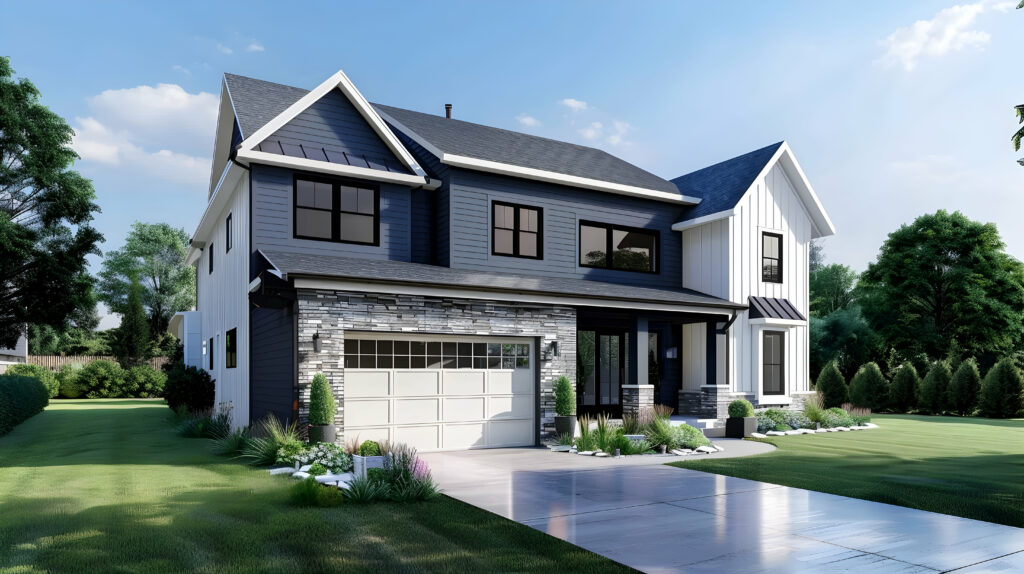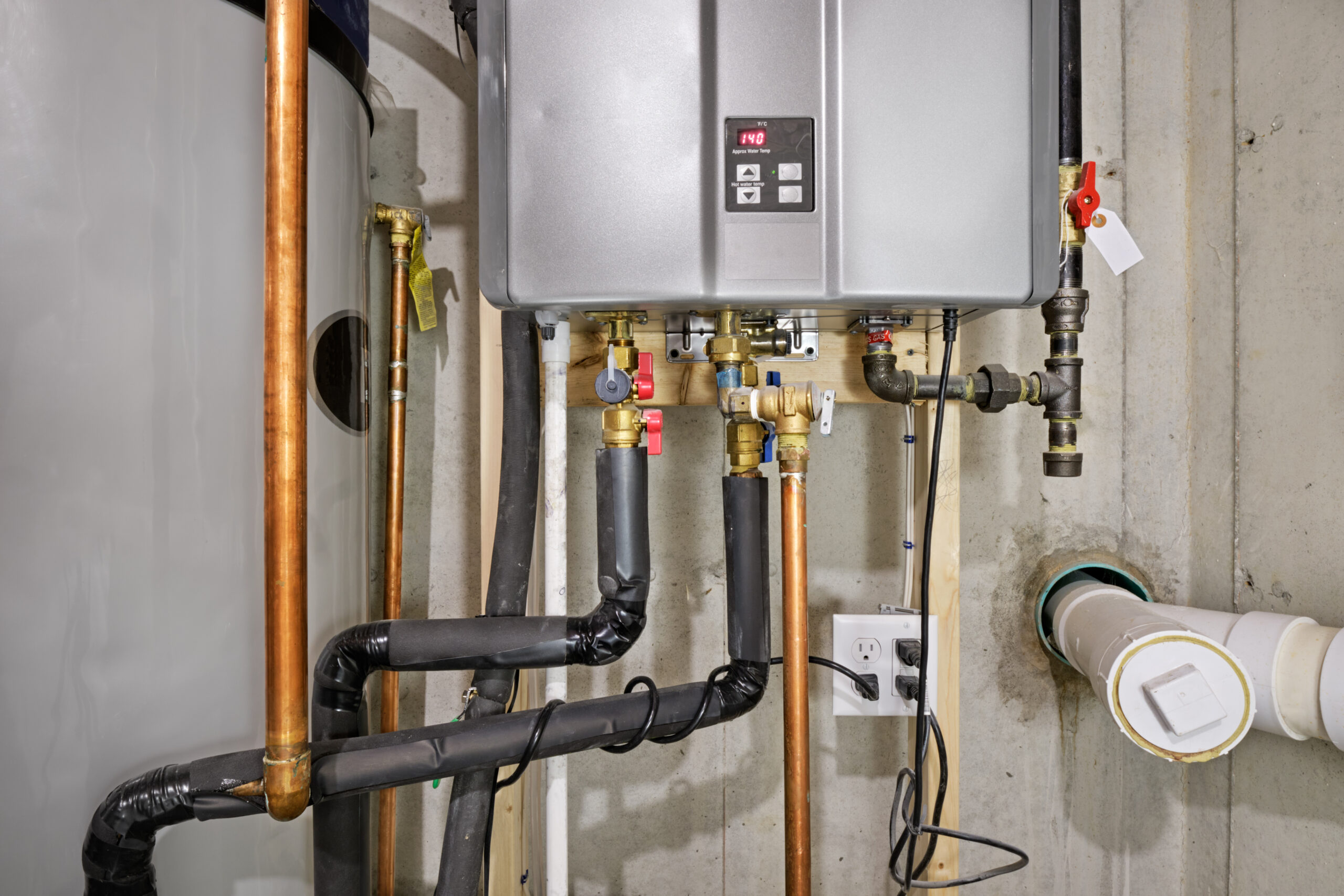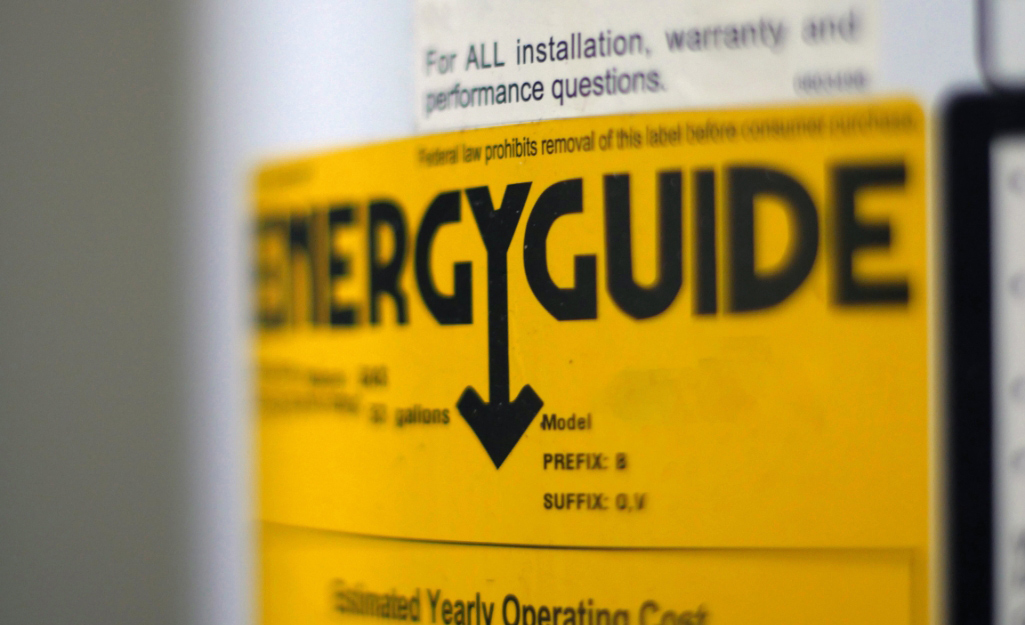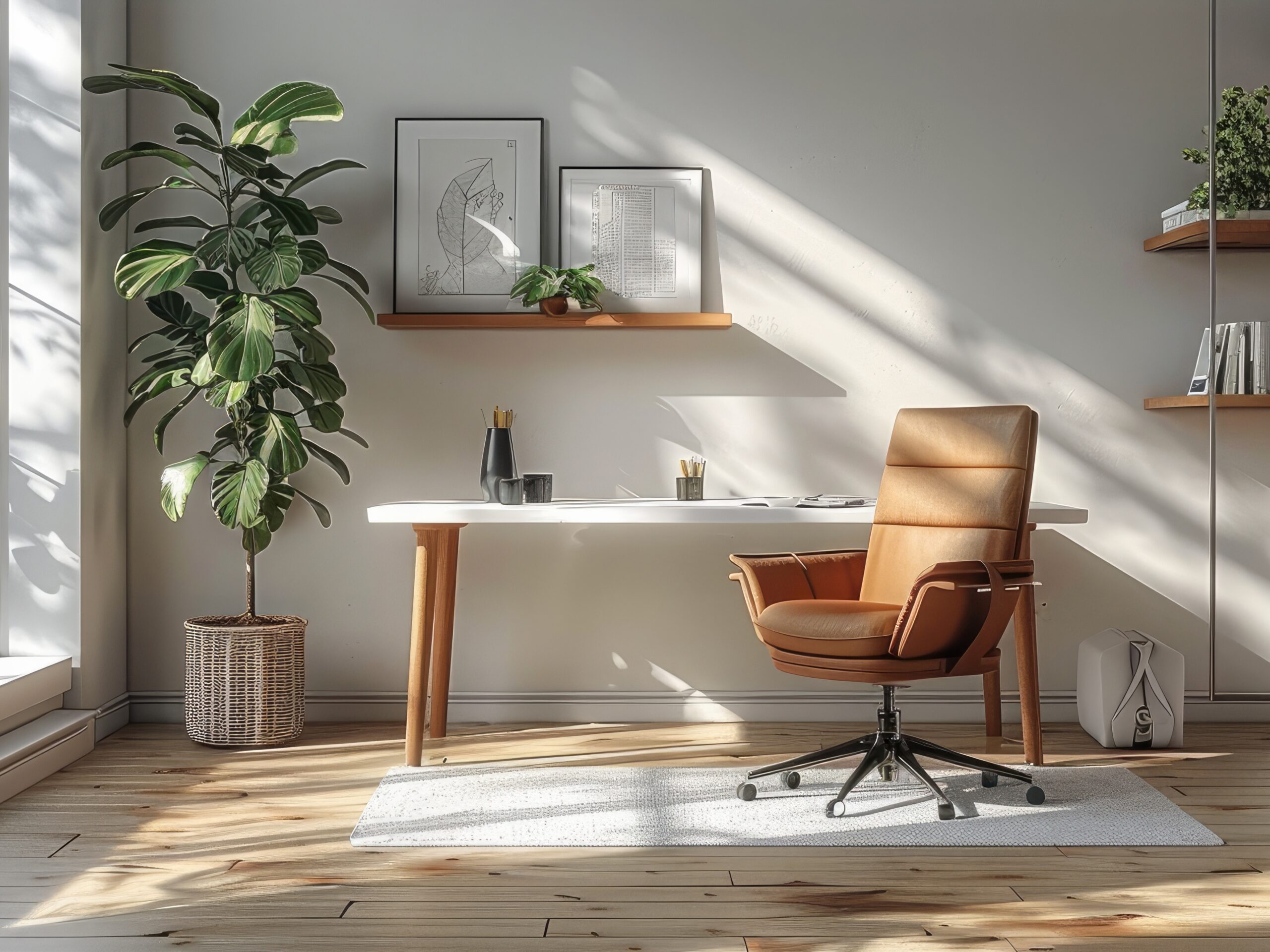|
Getting your Trinity Audio player ready...
|
Last Revised: 10/25/2024
Have you been wondering how much your new furnace or boiler will cost? Are you trying to decipher things like “variable-speed blower motor” and “AFUE rating” (that measures efficiency, by the way) as you pick the right model for your home?
Investing in your heating system should be taken seriously, after all it’s a purchase you’ll make only once every ten years.
But guess what – many people find that budgeting for a quality system without overspending can be like walking a tightrope.
If you’re like most homeowners, you’re probably concerned about one cost factor in particular: how much does a new heating system installation cost per square foot? After all, it only makes sense that a larger home will call for a more expensive heating or cooling system. So, the size of your home will decide how much to budget for, right?
Well, sort of.
While it’s a part of the picture, square footage is only one of the variables that can sway installation costs up or down. Among others are the type of system, energy efficiency, and even where you live. Together, these variables dictate how much you’ll end up spending on your new heating system.
Here at Mattioni, we help homeowners navigate this process every day. And we’re here to help guide you too.
In this article, we’ll first answer the main question of how much a furnace or boiler installation costs per square foot, and then we’ll iron down the other variables, giving you the best idea of how much your HVAC installation will cost.
While there’s no one-size-fits-all answer, by the end of this article you’ll know what cost factors come into play, and what range you can expect to pay based on your home and the system you choose.
Let’s start with the basics.
How Your Home’s Sq. Ft. Affects Heating Capacity (BTUs) Needs
A furnace or boiler’s capacity to heat your home (also referred to as the size of the system) is measured in British Thermal Units (BTUs). BTUs measure how much heating your system can produce.
You’d be right to think that your home’s square footage plays a significant factor in determining the BTU levels needed for your home. Matching your home with a properly sized system is crucial not only in providing the best possible comfort and efficiency in your home, but it also plays a part in the system’s wear and tear and longevity.
For example, a system sized properly for your home can sufficiently heat your home without over-exerting itself or experiencing frequent on/off cycles, known as “short cycling.” Short cycles not only leave a lapse in comfort but can also decrease the system’s life expectancy.
But while it’s true that a system with a higher temperature output comes at a higher expense, there is a lot more that plays into matching a system with your home than just square footage.

How to Properly Determine the BTU Needs of Your Home
Before we break down how much you should expect to pay per square foot of living space, we must address the additional factors that’ll decide how much heating your home needs.
Here are the other factors contributing to the needs of your home and final installation costs:
Your Floorplan/Layout:
An open floor plan may require a different heating approach compared to a home with many smaller rooms. Open layouts may allow air to circulate more freely, potentially allowing for a smaller system. More segmented homes might need a larger unit to ensure even heating throughout the space.
Your Insulation Rating:
The quality and amount of insulation of your home’s exterior significantly impacts which system size is needed. Homes with excellent insulation require less heating power, while poorly insulated homes likely need a more powerful system to maintain comfortable temperatures.
Number of Windows and Doors:
The more windows and doors your home has, the more potential for temperature loss and therefore the more heating output you’ll need. Older doors that lack energy-efficiency considerations are especially subject to this.
Size and Direction of Windows:
Large windows that capture ample sunlight will lose less heat than those that face away from the sun and reduce the heating load needed from your system. Considering the effect that large windows have on your home’s temperature is necessary when determining the appropriate BTU level needed to serve your home. Even the color of your roof can sway your HVAC needs up or down.
Your Climate:
The climate in which you live plays a massive role in determining your heating needs. Homes in colder climates will need more powerful heating systems to combat harsh winter conditions, while those in milder climates may get by with a smaller unit.
As you can see, your home’s square footage is just the first step in determining how powerful of a system you’ll need to install.
Now that you know the variables that’ll impact the appropriate BTU level for your home, let’s turn our attention to the question at hand: how much does a heating system installation cost per square foot?

How Much Does a Furnace or Boiler Installation Cost Per Square Foot?
By this point, you know that the size (BTUs) of your heating system will directly impact the upfront installation costs. A more powerful system will come at a higher price.
Now, let’s start connecting the dots between square feet and cost. Here’s our estimate of how many tons and BTUs you’ll need per your home’s square footage:
We calculated (using our prices) that you should expect to pay between $2 and $10 per square foot of living space for a heating system installation. More specifically, you’ll pay between $4 and $10 for the first 1,500 square feet, and between $2 and $7 for every additional square foot.
This might seem like a narrow range, but it represents a wider total price range with significant variations.
| Total Square Feet | BTUs | Cost | Cost per sq. ft |
| 1,000-1,500 | 40K – 60K | $6,000 – $10,000 | $4 – $10 |
| 1,500-2,000 | 40K – 80K | $6,000 – $10,000 | $3 – $7 |
| 2,000-2,500 | 60K – 80K | $6,000 – $10,000 | $3 – $5 |
| 2,500-3,000 | 80K – 100K | $7,000 – $11,000 | $2 – $4 |
| 3,000 – 3,500 | 80K – 100K | $7,000 – $11,000 | $2 – $4 |
| 3,500 – 4,000 | 100K – 120K | $7,000 – $11,000 | $2 – $3 |
It’s worth noting that those who replace both their heating and AC systems at the same time can expect to see some savings that’ll bring down the cost per square foot.
In other words, replacing your AC and heating system at the same time doesn’t simply double the price of one unit. You’ll save on labor costs and take advantage of any ongoing promotions that your HVAC installation company may be offering.
Remember that the numbers listed above are a general guideline and not an exact pricesheet. It’s impossible to factor the other variables we’ve already covered into this equation; the unique qualities of your house are seldom quantifiable.
As we know, these qualities of your house can greatly impact the specific heating and cooling needs of your home. So, it’s a good idea to use this as a starting point for a conversation with your HVAC professional.
To get a better idea of which end of this range you’ll fall into, we must now explore the other 5 pricing variables (besides system size).
The “Other” 5 Factors Affecting Installation Cost Per Sq. Ft.
Now, let’s take a deep dive into how the installation decisions you’ll make will directly impact not only the final cost per square foot, but also your heating quality and homeownership experience.
1. Understanding Stages of Operation: Which Is Right for Your Needs?
Most heating systems have different capabilities to throttle their temperature output, which directly impacts comfort, efficiency, system life expectancy, and installation costs.
- Single-stage systems offer no control over their heating or cooling and either run at 100% or shut off completely. They also come at the lowest cost to install.
- Two-stage systems have an additional operational speed, usually at about 65% power. They come at a higher installation cost, and offer a greater level of comfort, higher efficiency, and longer expected lifespan.
- Variable-speed (modulating) systems can run at virtually any speed between 30% and 100% and can significantly reduce energy bills while providing a greater comfort level. They come at the highest cost to install.
Many homeowners are well-served by two-stage heating systems, as they offer elevated comfort and efficiency without a drastic increase in price. Your personal desires and financial situation will determine which is best for you.
The precise energy efficiency rating of your heating system also plays a big role in determining the final installation costs.
2. How Energy Efficiency (AFUE Ratings) Impacts Cost per Square Foot
Every type of HVAC system has a range of efficiencies, giving you the flexibility to prioritize energy expenditure regardless of which system you choose.
The efficiency of a heating system is measured by AFUE (Annual Fuel Utilization Efficiency).
AFUE is represented by a percentage that indicates how much fuel is converted to heat, and how much is lost. For example, a 90% AFUE furnace produces 90 cents of heat per dollar of fuel and loses the other 10 cents.
One of the biggest distinguishments between heating systems is if they are in the 80% or 90% range. Those above 90% are considered high-efficiency and offer long-term savings at a higher price point. Those in the 80% range are less expensive to install but lead to higher energy costs down the road.
3. Choosing Your Fuel Source
When it comes to furnaces and boilers, the fuel source you choose affects not just the initial cost of the equipment, but more importantly it determines the long-term operating costs, efficiency, and environmental impact tied to heating your home. Here are your options:
- Natural Gas: One of the most popular heating system fuels chosen by homeowners for its high efficiency and low operating costs is natural gas. Furnaces that utilize natural gas can achieve AFUE ratings of up to 98% (and it burns cleaner than oil), making it the “greenest” fuel source. Although, natural gas isn’t available everywhere as it requires access from a public utility line.
- Propane: An alternative for those homes without natural gas access is propane. Propane is similar in efficiency and AFUE ratings to natural gas but can be slightly more expensive to purchase. Propane is typically stored in a tank on your property and is also more environmentally friendly than burning oil.
- Oil: Oil systems are prevalent in rural regions with colder climates as they’re known for their high heat output. While they are independent of utility grids, oil is typically more expensive than natural gas and propane, less efficient, and less environmentally friendly.
- Electric: Electric furnaces are less common as they’re typically much less efficient and more expensive to operate, however than can usually be installed at a lower price point.
- Dual-Fuel Systems: One sophisticated heating solution that’s gaining popularity is a dual-fuel system, which combines an electric heat pump with a gas or oil system. These systems offer the benefits of both as they can utilize the heat pump during mildly cool weather and the furnace or boiler when the temperature drops significantly. Dual-fuel systems are the most expensive to install, however they combine energy efficiency and low fuel costs with high heating output.
4. Ductwork Installation or Replacement
Ductwork is a critical component of any heating system. If your home already has ductwork in good condition, then your installation costs will be lower. However, if your home lacks ducts or the existing ducts need to be replaced or retrofitted, the costs can increase substantially.
- New Ductwork: If your home doesn’t have ducts, installing a new duct network is likely to push the costs higher, potentially significantly higher.
- Existing Ductwork: If your ductwork is in good condition, you won’t incur additional costs.
5. Regional Differences in Labor Costs
Where you live can impact how much you’ll pay for an HVAC system installation. Labor costs vary based on location, with urban areas typically charging more than rural areas. While rural areas may have lower labor rates, they could face higher equipment shipping fees.
- Urban Areas: Higher labor costs, but possibly easier access to equipment and contractors.
- Rural Areas: Lower labor costs, but equipment may cost more to ship or install due to distance traveled.
This factor is, for the most part, out of our hands entirely, but it’s still smart to be aware of the average costs in your area.
Secondary Factors That Impact Installation Costs
These variables may or may not come into play and sway costs when installing a new heating system.
1. Permits and Inspections
Some municipalities require permits and inspections for HVAC installations. These costs can be unavoidable depending on local regulations, adding to your overall bill.
2. Upgrading to a Smart Thermostat
Many homeowners choose to install smart thermostats to maximize the efficiency of their heating system, and some high-efficiency systems are only compatible with smart thermostats. Either way, a new smart thermostat will add to your installation costs but also offer long-term benefits.
3. Home Sealing and Re-Insulation
If your home isn’t well-insulated or sealed, your equipment will need to work harder to maintain a comfortable temperature. In older homes, upgrading insulation or resealing windows and doors may be necessary to ensure optimal performance.
- Improper Sealing: A poorly sealed home increases operational costs.
- Insulation Upgrades: Though adding to upfront costs, improved insulation can enhance energy savings and prolong the life of any HVAC system.

Quick Tips for Reducing Installation Costs
1. Get Multiple Quotes
You don’t have to settle for the first quote you receive. Shop around and get multiple quotes from reputable contractors to ensure you’re getting a fair price.
2. Consider the Timing of Your Installation
Schedule your installation during the off-season (spring or fall) when HVAC companies are less busy. This can potentially save you on labor costs, as demand is lower.
3. Look for Rebates and Incentives
Many utility companies and federal programs offer rebates or tax credits for installing energy-efficient systems. These incentives can significantly reduce your overall costs.
How Much Will My Home’s Furnace or Boiler Installation Cost?
At this point you should have a strong understanding of the factors that impact how much your home’s heating system installation will cost per square foot.
The cost of a system installation is dependent on factors beyond just the square footage of your home. The efficiency of your system, the system type, and where you live all come into play.
We know that this process can sometimes be overwhelming, so here are some more resources designed to empower you to make the right decision for your home:
To get answers to any questions about replacing your home’s HVAC system, reach out to the Mattioni team at (610) 400-8510 or schedule an appointment online.
Waiting for your system to fail can lead to noticeable drops in efficiency and comfort, and even a heating emergency. Be proactive and replace your system to maintain your household’s comfort and limit long-term expenses.
Curious how much your installation might cost? Use our free pricing resources to get a rough estimate before scheduling your consultation.







